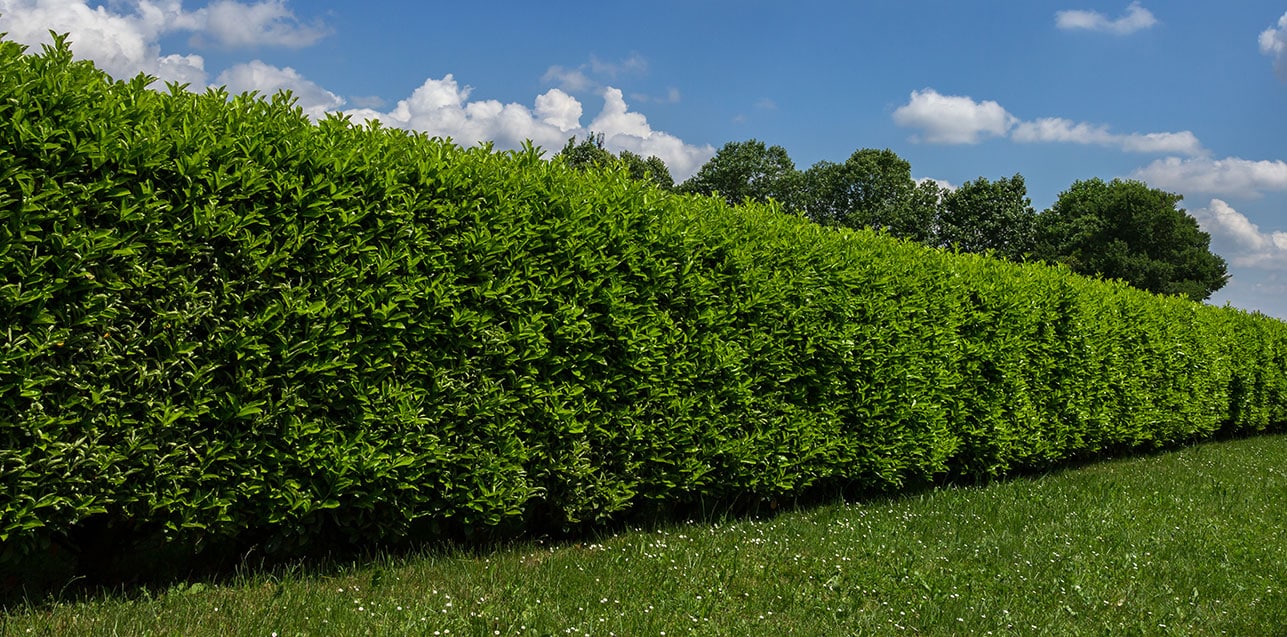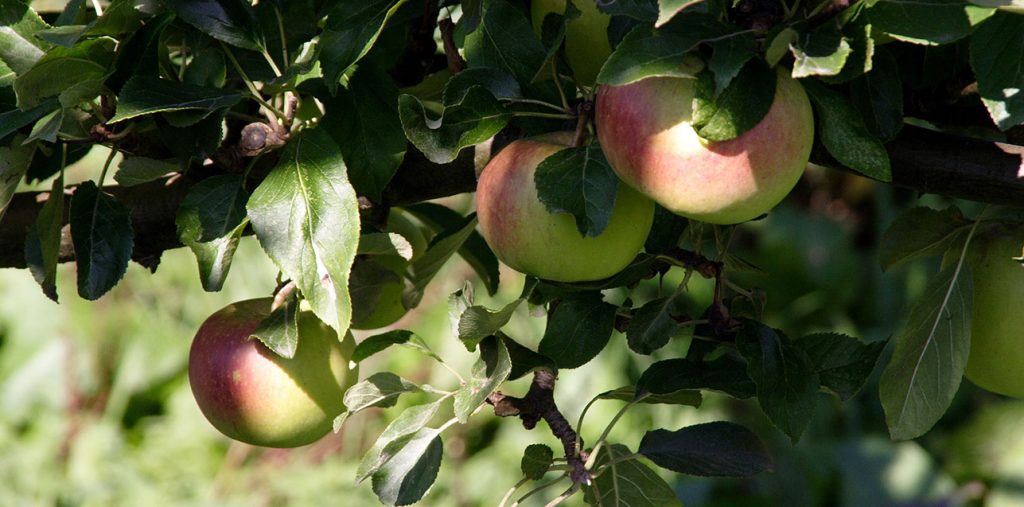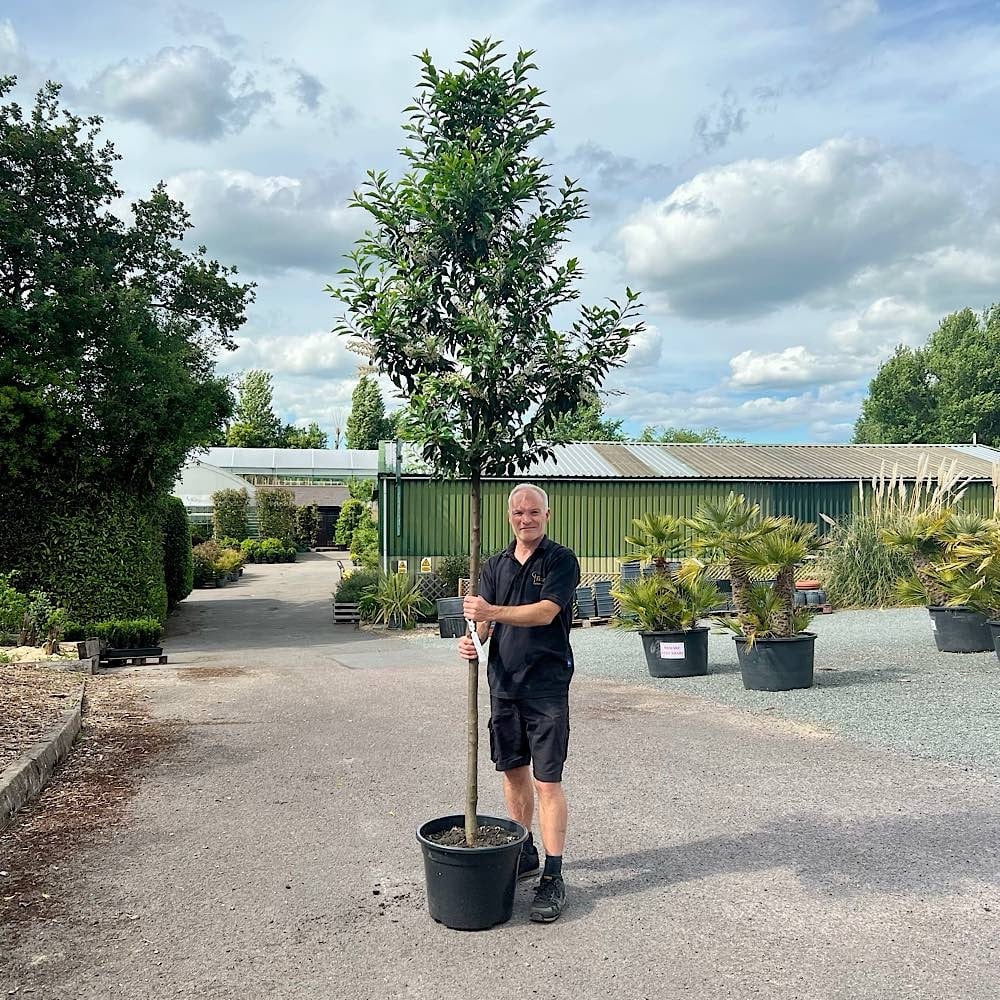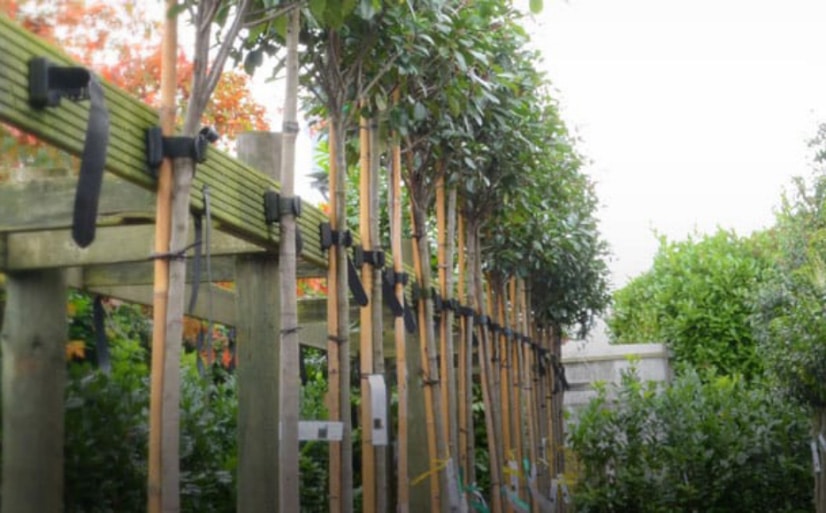Whether you’re dealing with an empty plot, a new build, or a garden overlooked by neighbours, many of our customers look for evergreen trees to provide instant screening. At King & Co, we specialise in sourcing a wide variety of trees that offer year-round privacy. They’re also great for screening unsightly views! Take a look at our top 3 varieties!
3. Portuguese laurel (Prunus Lusitanica)
Portuguese laurel is a popular choice for screening, growing to a height of around 6-8m. Its dark green, glossy leaves emerge from purple-tinted young stems, and in spring, it produces clusters of white flowers, adding seasonal interest. This tree’s dense foliage makes it ideal for shaping too. With an annual clip, it can form a neat, formal screen.
Portuguese laurel is a tough, reliable tree, that thrives in most soil types (except waterlogged ground). It grows well in both sunny and shaded areas, making it a versatile option for a range of garden conditions.
2. Cherry laurel (Prunus laurocerasus)
Cherry laurel is a fast-growing, glossy-leaved tree that forms very dense screening, thickening even more with regular clipping. It grows around 30-60cm per year and can reach a height of 5 to 6 metres. In spring, Cherry Laurel produces clusters of small, fragrant white flowers, followed by small berries in autumn, adding seasonal interest alongside its year-round foliage.
This hardy tree tolerates hard pruning, making it easy to shape and control while encouraging bushier growth. Once established, it thrives in most soil types, except chalky or waterlogged soils, and is well-suited to a wide range of conditions.
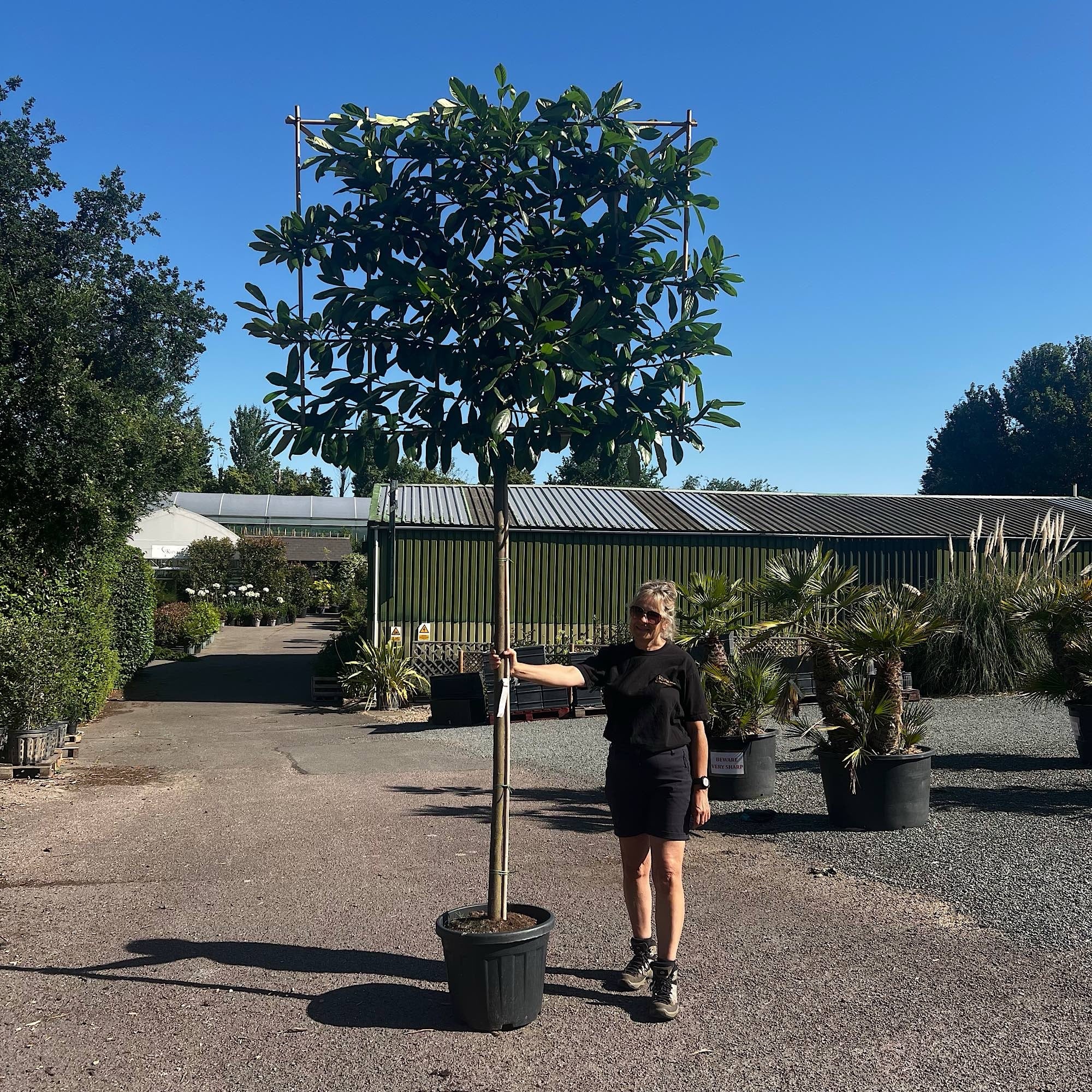
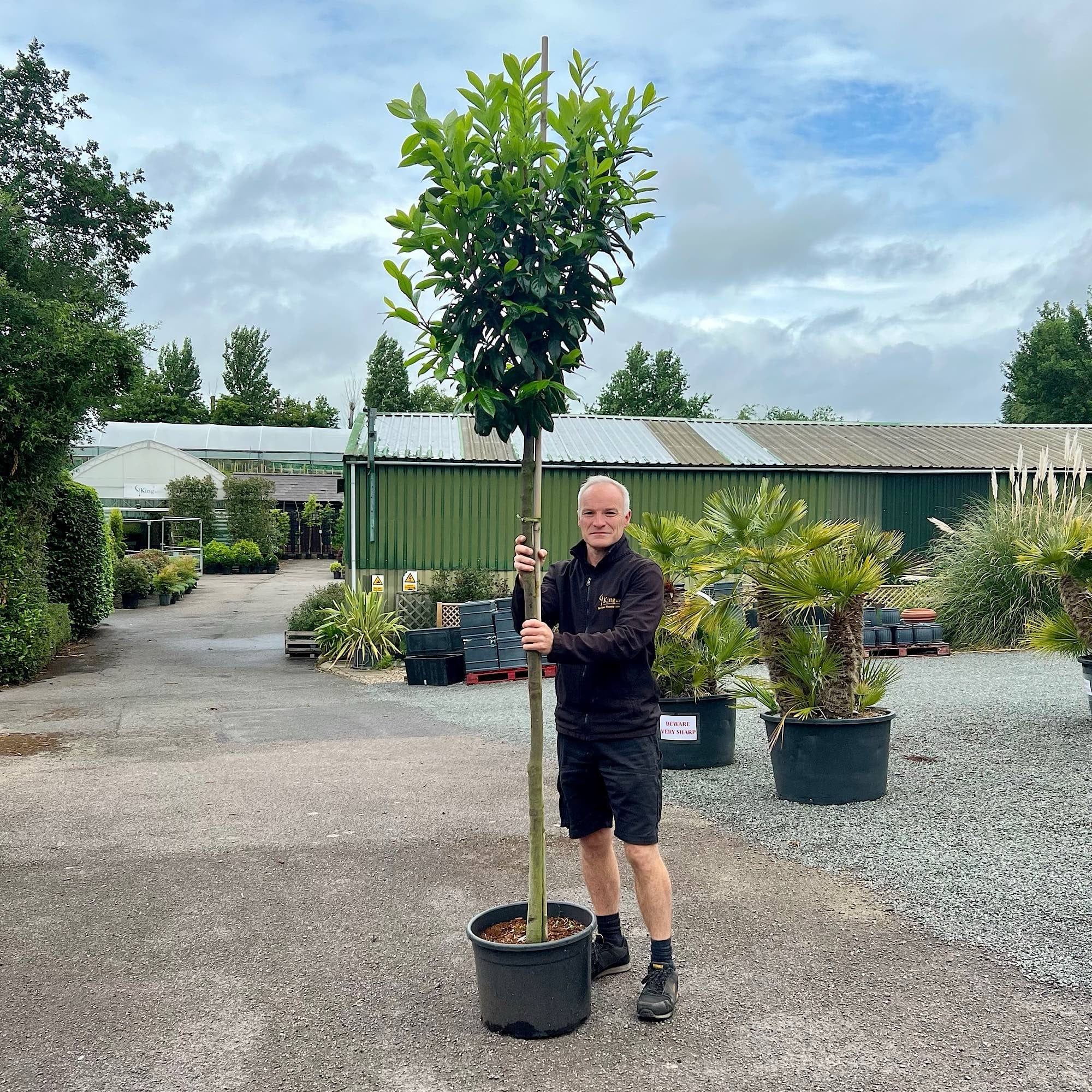
1. Photinia ‘Red Robin’
Photinia ‘Red Robin’ is a popular evergreen shrub or small tree, prized for its vibrant red new growth, which matures to a glossy green. This colourful foliage makes it an excellent choice for year-round screening with strong visual appeal.
It grows at a moderate pace, reaching around 4 to 5 metres in height, and responds well to regular pruning, which encourages dense growth and fresh red shoots. ‘Red Robin’ can be shaped as a hedge, screen, or standalone specimen, offering flexibility in garden design.
In spring, it may also produce clusters of small white flowers, adding to its seasonal charm. This tough and reliable plant thrives in most well-drained soils and will tolerate sun or partial shade, making it a versatile option for many gardens.
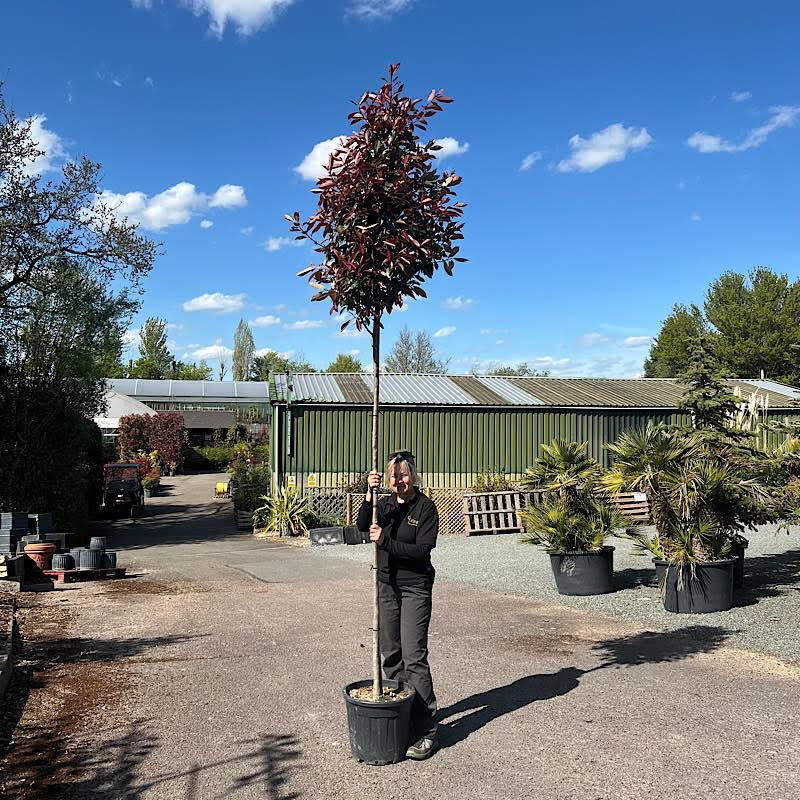
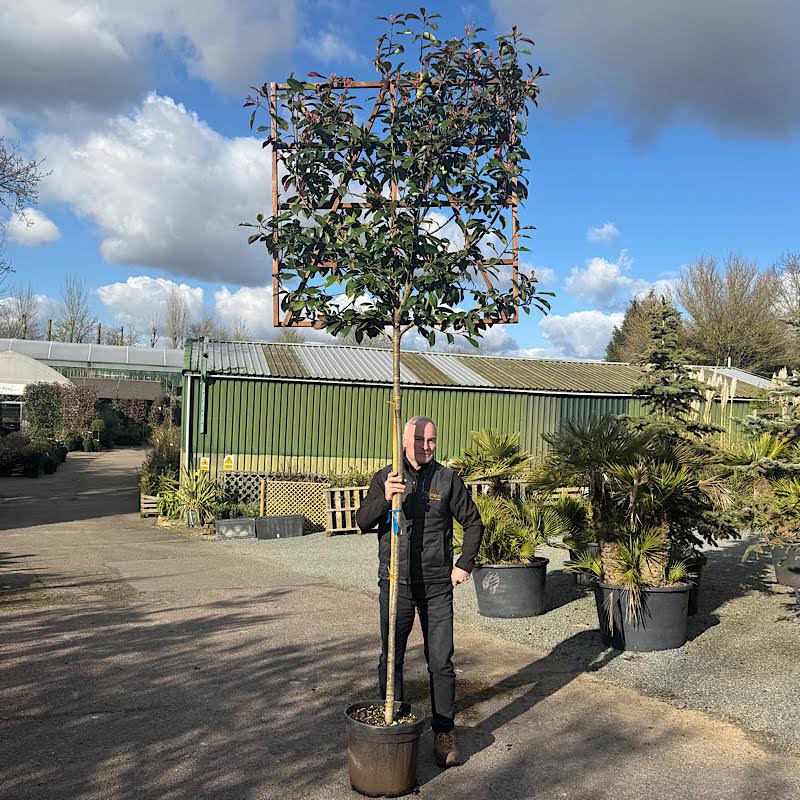
Frequently Asked Questions
When can you plant trees? Most of our trees are container-grown, so you can plant them at any time of year. However, bare root and rootball trees must be planted during their dormant period, which runs from November to March. These are only available during that time.
Do I need accessories when planting? Yes, staking and tying your tree after planting is essential. This support helps young trees stay upright and grow strong roots. Depending on the tree’s size and location, you may need to single or double stake. For step-by-step guidance, watch our video planting guide.
You can also add feeds and beneficial fungi to the soil. These give your tree the best possible start. View our recommended products here.
Can you plant my tree for me? Yes, we offer a tree planting service for customers local to the nursery. Pricing depends on the size of the tree or pot. To request a quote, please contact us.
Read More:
1. Tree Care Tips: How to plant, water and maintain your trees
2. Pleached Photinia Red Robin: A Stunning Screening Solution
3. What trees are best for new build gardens?


